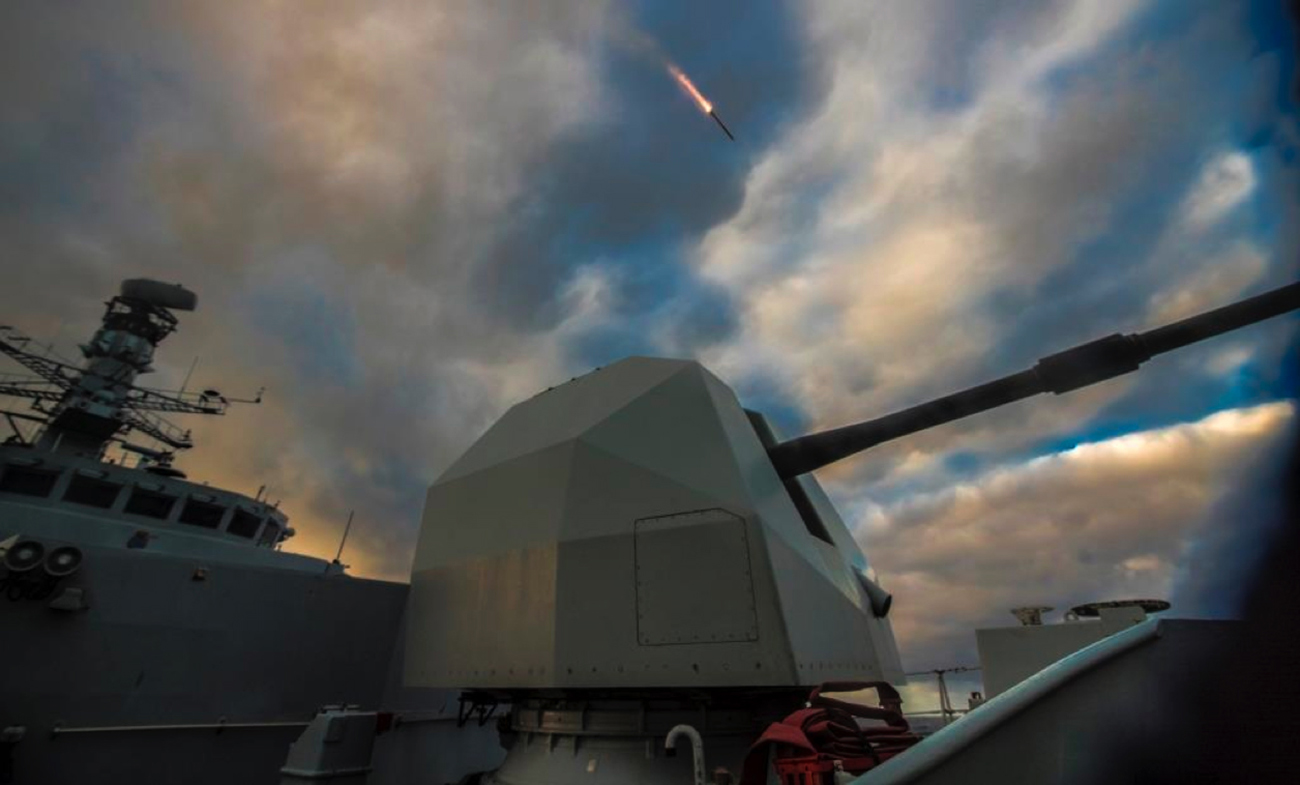Bird away... The rocket of a Sea Ceptor missile fires into life to power the Navy’s latest weapon against air and sea attack towards its target.
HMS Westminster became the second ship to successfully fire the multi-million pound missile system, just weeks after HMS Argyll used it to down drones over the Outer Hebrides.
Portsmouth-based Westminster headed to the same ranges with expert engineers from the system’s manufacturers MBDA aboard to put the new weapon through its paces.
Sea Ceptor is replacing SeaWolf – introduced in the 1970s – as the protector of the Royal Navy frigates against aircraft and missile attack.
As befits a 21st-Century missile system, it can deal with multiple incoming targets.
- From Sea Wolf to Sea Ceptor
- Is CAMM the right air defence for the Royal New Zealand Navy?
- TE KAHA’s new look.
- What upgrades are our frigates getting.
Unlike its predecessor, however, it can defend more than just the ship on which it is installed. Sea Ceptor can defend an area of 500 square miles – roughly the size of Greater Manchester, which means the system can provide additional protection for a naval task group on top of the long-range Sea Viper missiles carried by Type 45 destroyers.
In addition, Sea Ceptor can also be turned against small surface targets – jetskis, speedboats, fast attack craft if necessary.
"It was great to get Sea Ceptor away successfully – it was never in any doubt as to whether it would hit the target"
Lieutenant Nick Andrews, HMS Westminster’s Anti-Air-Warfare Officer
From the research centre at Benbecula, Mirach drones – 13ft long, speeds in excess of 600mph, can fly as low as 10ft – were launched to see whether Westminster could first locate, then track, then identify and finally destroy with the words: Take with Ceptor.
“It was great to get Sea Ceptor away successfully – it was never in any doubt as to whether it would hit the target,” said HMS Westminster’s Anti-Air-Warfare Officer, Lt Nick Andrews.
“We overcame some pretty testing environmental conditions which makes the result even more pleasing.
“Westminster managed to explore the real potential of the system during her training and to say it is a real game changer is an understatement. Unlike its predecessor, the system is capable of defending ships other than Westminster herself.

“Whether it’s engaging multiple air threats or fast incoming attack craft, Sea Ceptor represents a massive capability upgrade for the Type 23 frigate.”
The ship’s company and experts from MBDA spent most of 2017 preparing for the firings.
“The past eight months for HMS Westminster have been a terrific journey,” said Lt Cdr Matt Cox, the frigate’s weapon engineer officer in charge of the safe and successful operation of the new missile.
“As an Engineer Officer, there is no greater challenge than regenerating a warship from a deep maintenance period and returning her successfully to live operations.
“In the case of Sea Ceptor, MBDA have embedded their own engineering team who have worked hand-in-hand with the ship’s engineers to deliver success, which was signalled by the thud felt throughout Westminster.”



